Clay is a versatile material used in various crafts and projects, but over time, it can become hard and difficult to work with. Whether you’re an artist, a hobbyist, or someone learning to sculpt, understanding how to unharden clay can save you time and effort.
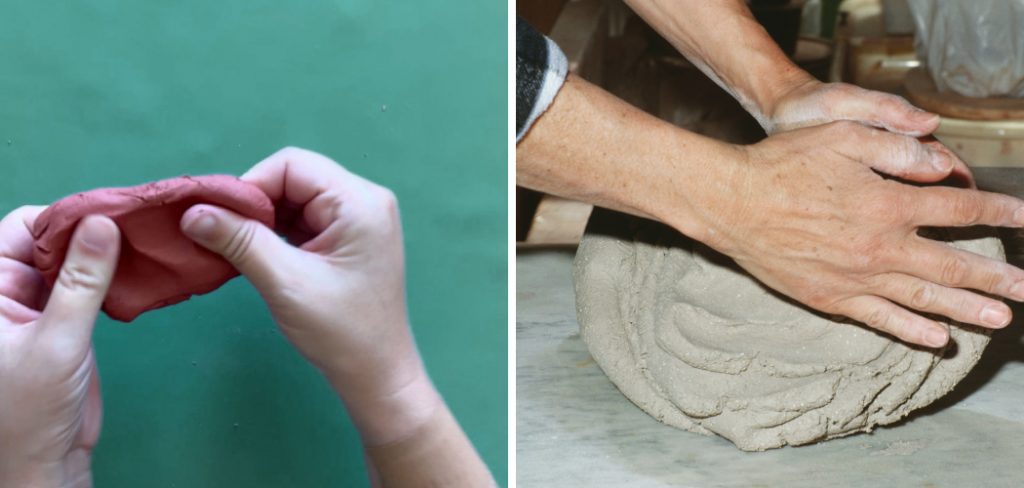
By using the right techniques and tools, you can restore the clay’s pliability and make it easier to shape and mold for your creative endeavors.
Why Does Clay Harden?
Clay hardens primarily due to the loss of moisture. Most types of clay, especially air-dry and natural clays, rely on water content to maintain their flexibility and workability. When exposed to air for extended periods, the water in the clay evaporates, causing it to stiffen and become brittle. Environmental factors, such as heat, sunlight, and low humidity, can accelerate this process.
Additionally, improper storage, like leaving the clay uncovered or in a poorly sealed container, can further contribute to its hardening. Understanding these causes is essential for preventing clay from drying out prematurely and preserving its usability.
Identifying the Type of Clay
When working with clay, it’s important to identify the specific type you are using, as different clays have unique properties and uses. Air-dry clay, for example, does not require kiln firing and is great for small projects and beginner crafts. Polymer clay, on the other hand, is versatile and cures through baking in a conventional oven, making it ideal for creating detailed sculptures and jewelry.
Ceramic clays, such as earthenware, stoneware, and porcelain, are typically used in pottery and must be fired in a kiln to achieve their final form. Knowing the type of clay helps determine the appropriate techniques, storage methods, and tools needed for your project.
10 Methods How to Unharden Clay
1. Adding Water Gradually and Kneading Thoroughly
One of the simplest and most common ways to restore hard clay’s workability is by adding small amounts of water gradually. Begin by placing the hardened clay in a plastic bag or on a non-porous surface, then sprinkle water lightly over the surface.
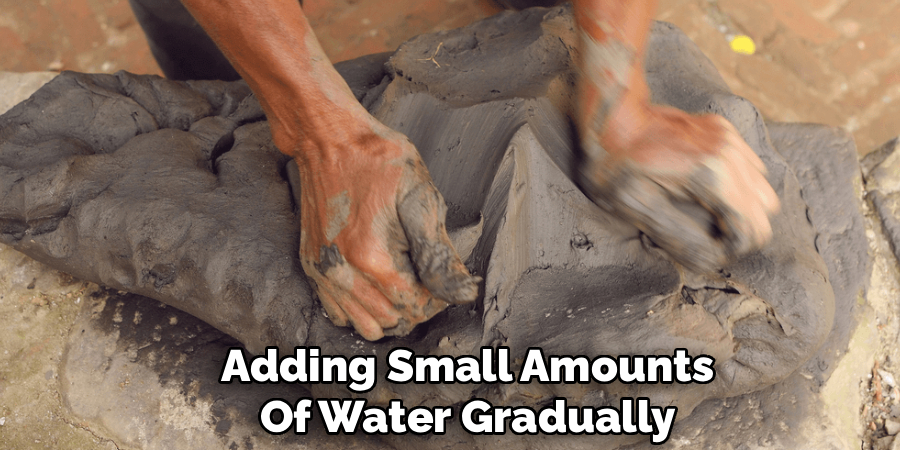
Using your hands, knead the clay thoroughly, pressing and folding it to allow the moisture to penetrate deeply. It is crucial to add water slowly to avoid making the clay too sticky or runny. Continue kneading and adjusting moisture over time until the clay reaches the desired softness. This traditional method works well for most ceramic clays and air-dry varieties.
2. Wrapping Clay in Damp Cloth and Letting It Rest
If your clay is slightly hard but not brittle, wrapping it in a damp cloth is an effective, gentle way to rehydrate it. Lay the clay on a clean towel or cloth, dampen another cloth thoroughly, and wrap the clay completely, sealing in moisture. Place the wrapped clay inside a sealed plastic bag or container and allow it to rest for several hours or overnight. This slow, consistent moisture transfer softens the clay evenly without risking oversaturation. After resting, unwrap and knead the clay to restore pliability. This method is especially beneficial for delicate or small clay pieces.
3. Using a Spray Bottle for Controlled Moistening
For clays that are stubbornly dry but too firm for direct water application, using a spray bottle provides fine control over moisture. Fill a spray bottle with clean water and mist the surface of the clay lightly. Wait a few minutes to let the water absorb, then knead the clay to distribute moisture internally. Repeat the mist-and-knead cycle several times if necessary. This gradual approach prevents the surface from becoming overly wet while allowing water to permeate the interior. Spray bottle application is ideal for maintaining consistent moisture without soaking the clay.
4. Immersing Clay in Water for Short Periods
For severely hardened clay, submerging it in water briefly can rehydrate it rapidly. Place the clay block in a bowl or bucket filled with room-temperature water and let it soak for about 10 to 20 minutes. Monitor the clay closely to avoid over-soaking, which can make the clay overly soft and messy. After soaking, remove the clay and let excess water drain or blot it with a towel. Knead the clay while it’s still moist to restore elasticity. This method is especially effective for natural ceramic clays that can absorb water readily.
5. Using Plastic Wrap to Trap Moisture Overnight
Plastic wrap creates a humid environment that encourages moisture to penetrate hardened clay slowly. Wrap the clay tightly in plastic wrap, making sure no air can circulate. Store the wrapped clay in a cool place overnight or longer if needed. The trapped moisture softens the clay gradually and evenly. After unwrapping, the clay will feel more supple and easier to work with. Combine this method with periodic kneading for best results. It’s a simple technique that can save clay that feels too tough for immediate use.
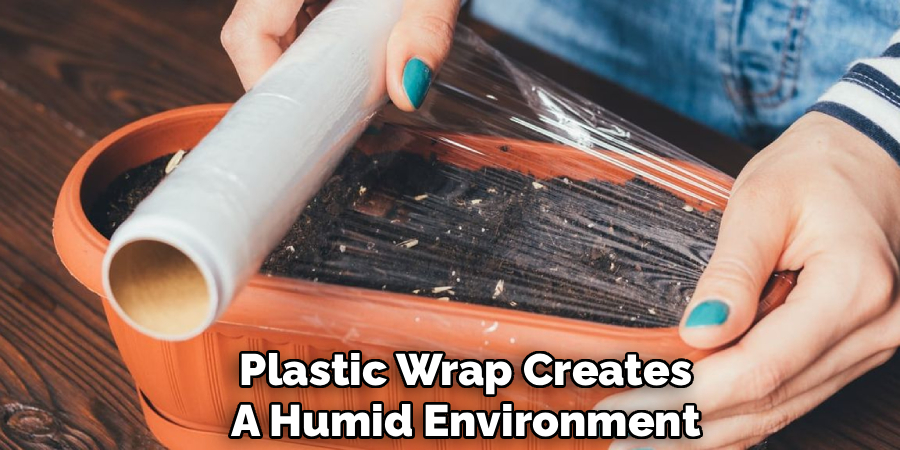
6. Applying Clay Softening Mediums
Certain commercial clay softening mediums or conditioners are available specifically for rejuvenating hardened clay. These products often contain a mixture of water and binding agents designed to restore moisture without compromising the clay’s composition. Apply the softener in small amounts directly to the clay and knead thoroughly to distribute evenly. Such mediums can be especially useful when working with polymer clay, which can dry out and harden after prolonged exposure to air. Follow product instructions carefully for best outcomes.
7. Mixing with Fresh, Soft Clay
If your hardened clay is too difficult to revive alone, blending it with fresh, soft clay can restore its pliability. Cut or crumble the hardened clay into manageable pieces, then gradually mix it with new clay in small batches. Knead thoroughly to ensure even distribution of moisture and texture. This approach not only softens the hardened clay but also rejuvenates the overall batch by balancing moisture content. This method is particularly effective in pottery studios where leftover clay is regularly recycled.
8. Using a Clay Mixer or Slab Roller for Mechanical Softening
For artists and studios with specialized equipment, mechanical softening via clay mixers or slab rollers is a practical option. These devices physically work the clay, breaking up dried sections and redistributing moisture uniformly. By repeatedly passing clay through the machine, the hardness can be reduced significantly without the need for adding excess water. Mechanical softening is efficient for large quantities of clay and produces a consistently workable texture suitable for throwing or hand-building.
9. Gently Heating Clay to Reactivate Plasticity
For some polymer clays or wax-based clays, gentle warming can restore flexibility. Place the clay in a sealed plastic bag and immerse it in warm water or hold it near a low heat source for a short period. The warmth softens the material, making it easier to knead and mold. It is essential to avoid overheating, as excessive heat can cure or damage the clay. This warming method is not suitable for ceramic or earthen clays but works well for specific synthetic clays that harden with cooling.
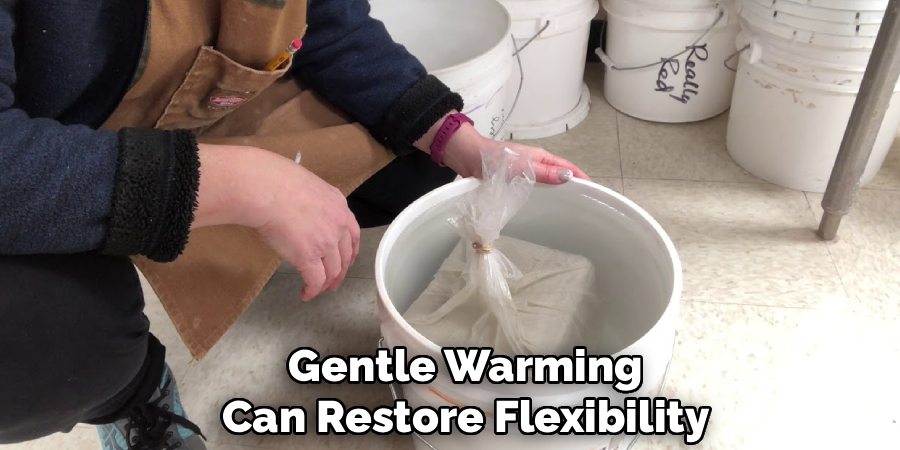
10. Preventing Over-Drying for Future Use
While this is not a direct method to unharden clay, preventing drying in the first place is the best way to avoid the issue. Store clay wrapped tightly in plastic bags with added moisture sources like damp sponges or cloths. Keep clay in airtight containers and avoid prolonged exposure to air. Label clay batches with storage dates and regularly check moisture levels. Proper storage habits minimize the need for rehydration methods and ensure clay remains soft and ready for use whenever inspiration strikes.
Maintenance and Upkeep
To ensure your clay stays in optimal condition, regular maintenance and attentive care are essential. Periodically inspect your stored clay for signs of drying or improper storage. If the clay begins to lose moisture, take immediate action by lightly misting it with water and rewrapping it securely.
Avoid introducing excessive moisture, as this can lead to an uneven consistency or slippage. Clean your storage containers and tools regularly to prevent contamination or mold growth. When working with clay, always clean and moisten your tools to avoid transferring debris or dust into the material. Maintaining a clean and organized workspace not only helps preserve the quality of your clay but also creates a more efficient and enjoyable crafting environment.
Alternative Methods and Tips
If traditional methods for maintaining clay aren’t accessible or convenient, there are a few alternative approaches to consider. For instance, using a damp sponge can help regulate the moisture level of your clay without saturating it. Simply pat the sponge onto the clay surface to rehydrate dry areas evenly. Another tip is to store clay in vacuum-sealed bags, which can effectively trap moisture while preventing air exposure. For long-term storage, you can also wrap the clay in plastic wrap before placing it in an airtight container for added protection.
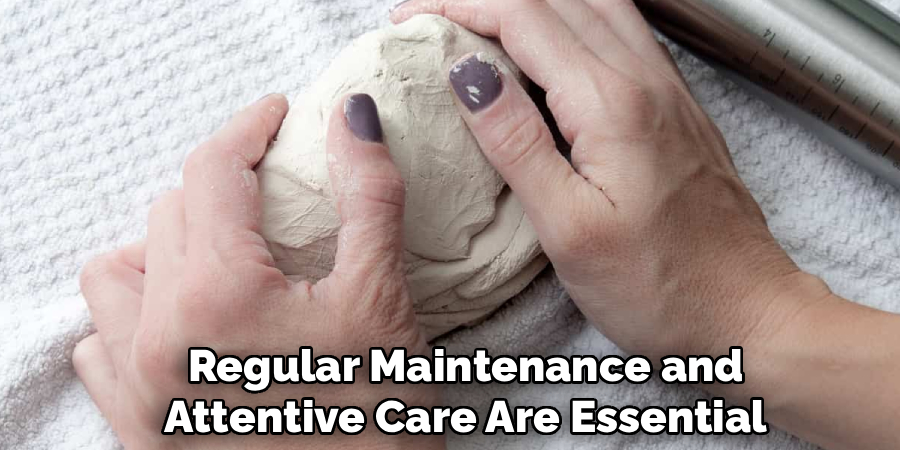
Additionally, investing in a clay-specific misting spray bottle is an efficient way to keep your clay pliable during extended crafting sessions. When working, regularly rotate and knead the clay to maintain its elasticity and prevent drying on one side. Finally, consider labeling your clay storage containers with dates or notes on moisture levels to keep track of its condition over time. These tips can make the crafting process smoother and help you consistently achieve the best results with your clay projects.
Conclusion
Unhardening clay requires patience, attention, and sometimes a combination of methods tailored to the type of clay and its condition. Whether adding water gradually, wrapping in damp cloths, or using commercial softeners, each method aims to restore the clay’s natural plasticity and ease of manipulation.
Thanks for reading our blog post on how to unharden clay! We hope you found it helpful and informative.
Specialization:
- Master of wheel-throwing, hand-building, and advanced glazing techniques
- Focus on creating both functional pottery and decorative art pieces
Recognition:
- Celebrated by collectors and art enthusiasts for creating one-of-a-kind pieces that blend artistry with functionality
- Participates in local and national exhibitions, earning accolades for his innovative designs and craftsmanship
Passion:
- Deeply committed to exploring and pushing the boundaries of ceramic artistry
- Continuously experiments with new materials, firing techniques, and artistic concepts to evolve his craft
Personal Philosophy:
- Believes in the transformative power of art, aiming to evoke emotions and connections through his ceramic creations
- Advocates for sustainability in ceramics, using eco-friendly materials and practices whenever possible


